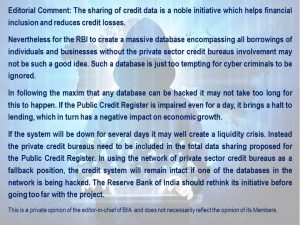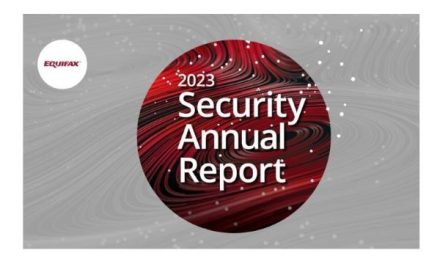The Reserve Bank of India’s (RBI’s) Public Credit Registry is aimed at capturing details of all borrowers and wilful defaulters.
RBI had in June announced setting up of a Public Credit Registry for India to address information asymmetry, foster access to credit and strengthen the credit culture in the economy. BIIA has been covering this project for some time; see also read: Public Credit Register
The Reserve Bank of India (RBI) has shortlisted six major IT companies, including Tata Consultancy Services Ltd (TCS), Wipro Ltd and IBM India, to set up a wide-based digital Public Credit Registry for capturing details of all borrowers and wilful defaulters.
The proposed Public Credit Registry will also include data from entities like capital markets regulator Securities and Exchange Board of India (Sebi), the corporate affairs ministry, Goods and Service Tax Network (GSTN) and the Insolvency and Bankruptcy Board of India (IBBI) to enable banks and financial institutions to get a 360-degree profile of the existing as well as prospective borrowers on a real-time basis.
“Consequent to the publication of expression of interest (EOI) on October 27, 2018, the Reserve Bank had received responses from several vendors for implementation of end-end solution for Public Credit Registry,” the central bank has said. After evaluating the responses of the interested vendors, the RBI said it has been decided to shortlist the six firms.
The other three shortlisted vendors are: Capgemini Technology Services India, [BIIA member] Dun & Bradstreet Information Services India, and Mindtree Ltd.The RBI would soon seek request for proposal from the six vendors.
In June this year, RBI had announced to set up a Public Credit Registry for India to address information asymmetry, foster access to credit and strengthen the credit culture in the economy. Earlier, a high-level task force was constituted by RBI to review the current availability of information on credit, the adequacy of the existing information utilities, and to identify gaps that could be filled by a PCR.
“In essence, Public Credit Registry will be a digital registry of authenticated granular credit information and will work as a financial information infrastructure providing access to various stakeholders and enrich the existing credit information ecosystem,” according to the EOI document issued in October.
 The Public Credit Registry would be the single point of mandatory reporting for all material events for each loan, notwithstanding any threshold in the loan amount or type of borrower. Currently, there are multiple granular credit information repositories in India, with each having somewhat distinct objectives and coverage. Within the RBI, CRILC is a borrower-level supervisory dataset that keeps record of loans of Rs 5 crore and above. Also, there are four privately owned credit information companies (CICs) operating in India. RBI has mandated all its regulated entities to submit credit information individually to all four CICs.
The Public Credit Registry would be the single point of mandatory reporting for all material events for each loan, notwithstanding any threshold in the loan amount or type of borrower. Currently, there are multiple granular credit information repositories in India, with each having somewhat distinct objectives and coverage. Within the RBI, CRILC is a borrower-level supervisory dataset that keeps record of loans of Rs 5 crore and above. Also, there are four privately owned credit information companies (CICs) operating in India. RBI has mandated all its regulated entities to submit credit information individually to all four CICs.
According to the EOI, the proposed solution should allow easy integration with ancillary information sources, such as the Ministry of Corporate Affairs, Sebi, GSTN, CERSAI, utility billers, Central Fraud Registry and Wilful Defaulter/Caution/Suit Filed Lists.
Besides, borrowers would also be able to access their own credit information and seek corrections to the credit information reported on them.
Setting up of the Public Credit Registry assumes significance amid rising bad loans in the financial system. The non-performing assets in the banking system stand at about ₹10 trillion.
Source: Livemint


























